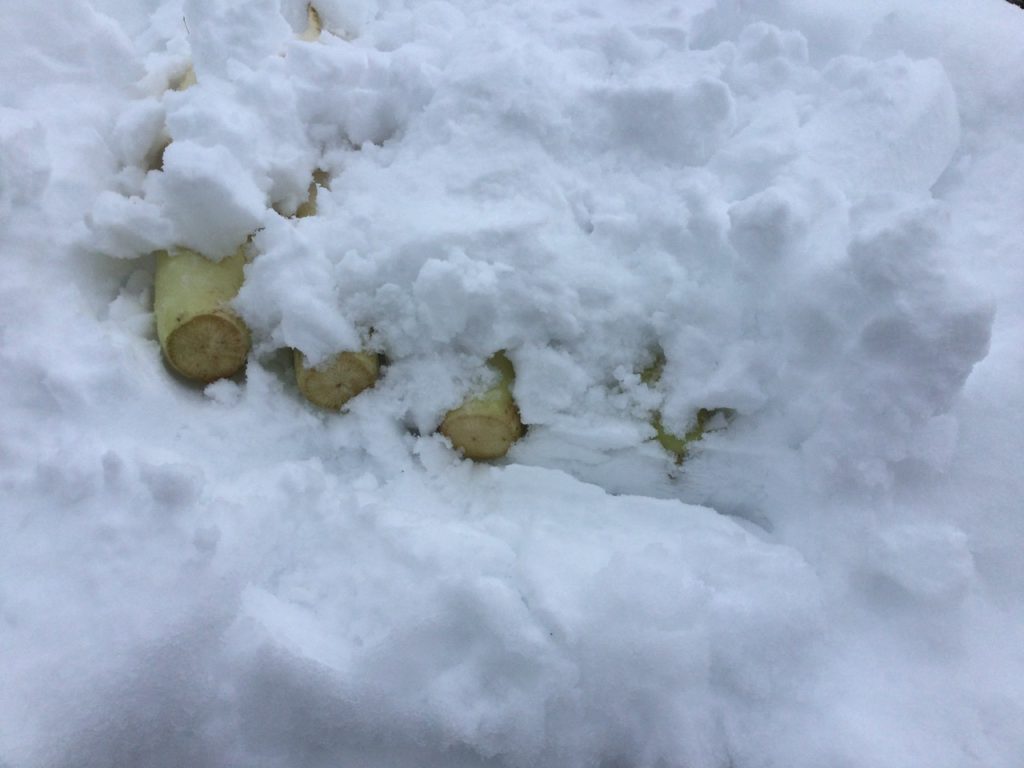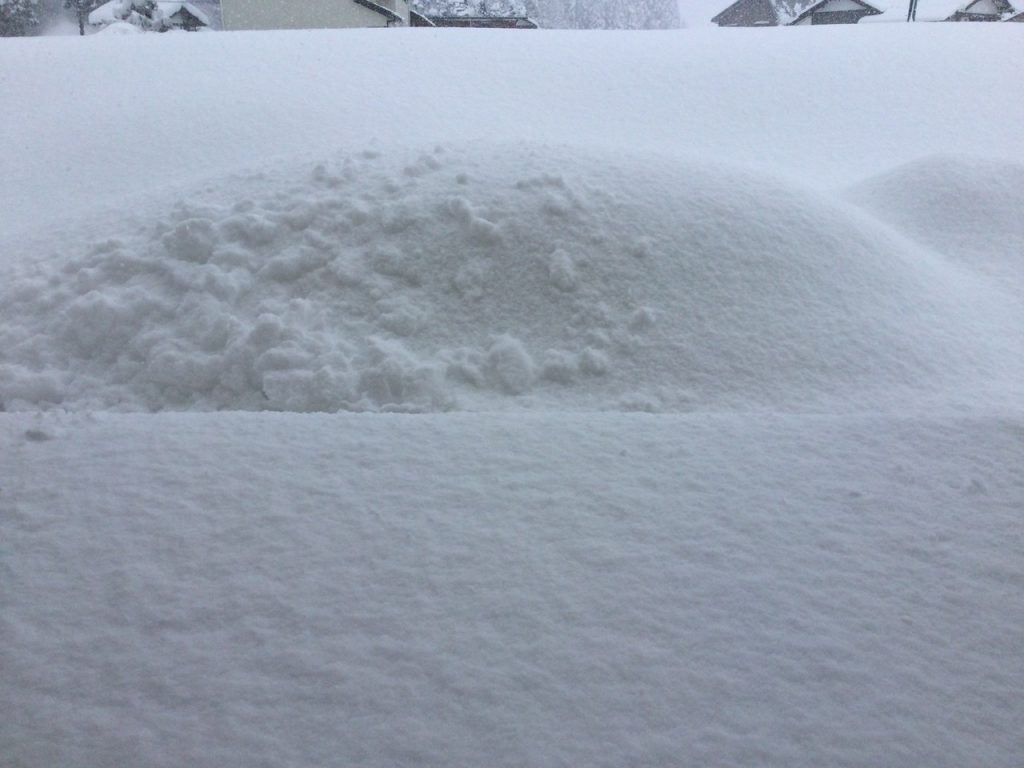Nature provides her own refrigerator during the winter here in the snow country in Minamiuonuma, Niigata, Japan.
The Minamiuonuma region is known for its heavy snowfall every winter, yet people have inhabited the area for ages.
In the past, preserving food was a necessity to survive the long winters. People were isolated during the harsh winters and often had to rely on preserved foods and self-sufficiency.
The wisdom of previous generations is carried on even today and can be seen in a variety of preserved, pickled, and dried foods.
One regional technique here in snow country is to bury root vegetables (such as daikon radishes and carrots) and leafy vegetables (such as heads of cabbage) in the snow. This method of preservation is feasible here because the area usually remains buried in snow throughout the winter.
Vegetables are harvested late in the year and then buried in the snow, or in some cases the vegetables are left in the ground under the snow and harvested later.
The benefits of burying vegetables in the snow are two-fold. The snow not only preserves the vegetables, but also makes the vegetables sweeter.
Snow is also used for refrigeration of some regional Japanese sake (rice wine), which is prized for its mellowness and sweetness.
On the advice of neighbors, I buried six big daikon radishes in the snow in December. Now in February, the vegetables are buried under more than five feet of snow, where they will likely remain until some of the snow melts or some wildlife go treasure hunting and find them first.
Important: be sure to clearly mark the spot where the vegetables are buried with a tall pole or other clear indicator… or the vegetables may be difficult to find during the height of winter.

